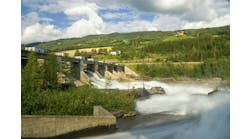We start this series with the steps for the selection and installation of the field measurements and control valves or variable speed drives to enable the control system to meet plant objectives. The measurement is the essential window into the process and manipulating a flow is the essential way to affect a process.
- Select the measurement method that has the best repeatability and threshold sensitivity and the least noise and drift. For temperature, resistance temperature detectors have an order of magnitude better specs in all of these performance criteria than thermocouples if vibration or temperature is not too high. Coriolis meters have a similar order of magnitude performance advantage over other flow meters on streams of variable composition and can be the right choice in smaller lines where lifecycle cost is considered. For larger line sizes where differential head meters are the economic choice, use meter runs and dual transmitters to reduce noise and extend rangeability. Radar level measurements have an order of magnitude performance advantage and are the right choice for accurate inventory or tight mass balance control despite changes in process composition if the dielectric constant is not too low. Use pH electrodes with spherical or hemi-spherical bulbs, glass to meet worst case process conditions (e.g. high temperature), and replaceable liquid reference junctions. Use smart transmitters and minimize the use of sample lines, impulse lines and capillary systems.
- Select the measurement location that provides the most representative indication of the process variable of interest, the greatest sensitivity, fastest response, and the least noise. For temperature sensors this means a liquid velocity of at least 0.5 fps or a gas velocity of 50 fps. For pH electrodes the goal is a liquid velocity of at least 5 fps and no bubbles. For column temperature control, the best tray is generally the one with the largest temperature change for both an increase and decrease in reflux to feed flow ratio. The sensor is best located in the liquid on the tray rather than on the vapor space above the tray for a faster sensor response.
- Select and design the control valve or variable speed drive to provide the best installed flow characteristic and the least deadband and best resolution. Realize there is an installed flow characteristic that depends upon the relative size of valve drop for valves and static head for pumps compared to system pressure drop. Use software to compute and plot the installed flow characteristic. For a control valve, a diaphragm actuator, digital positioner, equal percentage characteristic and sliding stem valve with a valve drop that is at least 25% of the system pressure drop offers the best performance. For a variable speed drive, a pulse width modulated inverter, an internal speed control system, "invert duty" totally enclosed fan cooled (TEFC) or totally enclosed water cooled (TEWC) motors depending on process temperature, XPLE jacketed cables, separation from instrumentation cables and isolation transformers as needed to prevent EMI, high resolution signal input cards, deadband less than 0.1% in drive setup, and a static head that is less than 10% of the system pressure drop.
- Tune the valve's digital positioner or drive's speed control to provide a fast non-oscillatory response for minimum offset without integral action. If integral action must be used, set an integral deadband to suppress a limit cycle. There are some isolated examples where the cycling will help a temperature loop where the process volume averaging of the fast oscillations helps achieve a greater precision. The advantage of tighter temperature control may out weigh the premature wearing out of valve packing.
- Ask yourself the questions in the checklists given in the May and June 2012 Control Talk Blogs to make sure you covering all the bases in the design and implementation of the field instrumentation and final control elements. If you want a greater understanding, consider buying or borrowing the book Essentials of Modern Measurements and Final Elements in the Process Industry.
Next week we move on to designing the control strategy.




